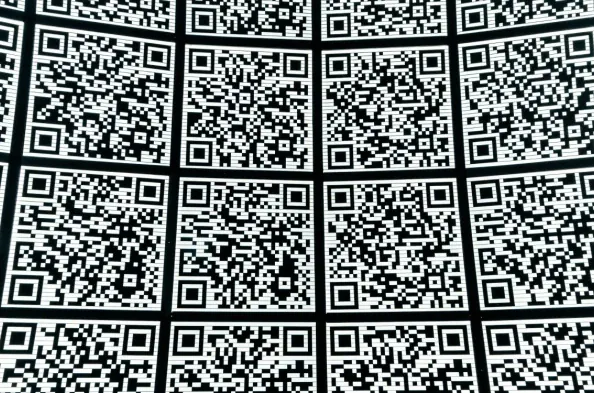Short introduction
Vernon Yai is a data protection expert specializing in privacy protection and data governance. An established thought leader in the industry, he focuses on risk management and the development of innovative detection and prevention techniques to safeguard sensitive information.
Can you explain how QR codes became more common during the COVID-19 pandemic?
During the COVID-19 pandemic, the need for contactless interactions skyrocketed. Businesses and service providers were looking for ways to minimize physical contact, and QR codes provided an efficient solution. They allowed for touchless menus in restaurants, digital payments, and contactless check-ins. This surge in usage naturally increased their presence in our daily lives.
What are the main security risks associated with QR codes?
The primary risk with QR codes comes from the inability to verify the source before scanning. They can link to websites or data, so scammers can easily hide dangerous links or malware within them. Once scanned, users could inadvertently be directed to fraudulent websites or trigger the download of malicious software.
Why are QR codes particularly appealing to cybercriminals?
QR codes are appealing to cybercriminals because they can effectively obscure harmful links or malware, making it easier to deceive users. The convenience and frequency of their use also mean that many people scan QR codes without a second thought, giving criminals a perfect opportunity to exploit.
What is quishing, and how does it differ from traditional phishing attacks? How is the malicious link delivered in a quishing attack? What happens when a user scans a malicious QR code in such an attack?
Quishing is a form of phishing that specifically involves QR codes. Unlike traditional phishing, where a malicious link is often embedded in an email or message, quishing embeds the link within a QR code. When a user scans the code, their device reads the embedded URL and directs them to a fraudulent website. This can lead to the unintentional disclosure of personal information or the downloading of malware onto their device.
Can you provide an example of a recent quishing attack?
A notable example involves scammers distributing physical letters with QR codes intended to install Android malware. Recipients were misled into scanning these codes, which resulted in their devices being compromised by malicious software.
How are scammers using physical QR codes to carry out fraud?
Scammers often tamper with legitimate QR codes in public spaces by placing fake ones over them. This has been seen on restaurant tables, parking meters, posters, and flyers. When scanned, these bogus QR codes direct users to phishing sites designed to steal personal or payment information, as happened in the UK with fake parking lot QR codes.
What steps can individuals take to recognize and avoid malicious QR codes? What are some signs that a QR code might be malicious? Why should users be cautious when scanning QR codes in public places? How can tampering with QR codes be identified?
Individuals should be cautious with QR codes in public places or those received through mail, as they might be placed by scammers. Signs of a malicious QR code include looking out of place or appearing tampered with. Users should avoid entering sensitive information on sites accessed through QR codes and manually enter URLs where possible. Checking if a QR code appears covered or tampered with can also help identify potential scams.
What should users do instead of scanning a suspicious QR code?
If a QR code seems suspicious, users should refrain from scanning it. Instead, they can manually type in the URL or use trusted bookmarks to directly access the intended website. This helps ensure they aren’t redirected to a fraudulent site.
How can QR code security apps help protect users?
QR code security apps can analyze QR codes for potential threats. These apps scan the QR code and alert users if it detects anything suspicious, such as a malicious URL. This extra step can prevent users from unknowingly falling victim to scams.
What measures can businesses take to secure their QR codes? How can dynamic QR codes with expiration dates improve security? How do URL shorteners with verification add an extra layer of security? Why is monitoring QR code usage important for detecting fraud? How can adding security markers to QR codes help protect against tampering?
Businesses can use dynamic QR codes with expiration dates, which become invalid after a set time, reducing the window for exploitation. Implementing URL shorteners with verification ensures links lead to legitimate sites. Monitoring QR code usage helps detect unusual patterns indicative of fraud. Adding watermarks, logos, or branding can help customers distinguish genuine codes from tampered ones, thereby increasing security.
Are there any particular QR code scanners or web-based link checkers you would recommend for businesses?
For businesses, I recommend QR code scanners with built-in security features and web-based link checkers like VirusTotal. These tools help identify potential threats before users engage with the QR codes and ensure the links are safe.
How does adding watermarks, logos, or other branding to QR codes enhance their security?
Adding watermarks, logos, or branding to QR codes makes it more difficult for scammers to create convincing fake codes. These security markers provide an additional layer of authenticity, helping users quickly recognize and trust the QR code as legitimate.
Do you have any advice for our readers?
Always be cautious when using QR codes, especially in public spaces or from unfamiliar sources. Use security apps to scan QR codes whenever possible. Remember to avoid entering sensitive information through links provided by QR codes, and manually enter URLs for trusted sites. Staying vigilant can help protect you from falling victim to scams.






